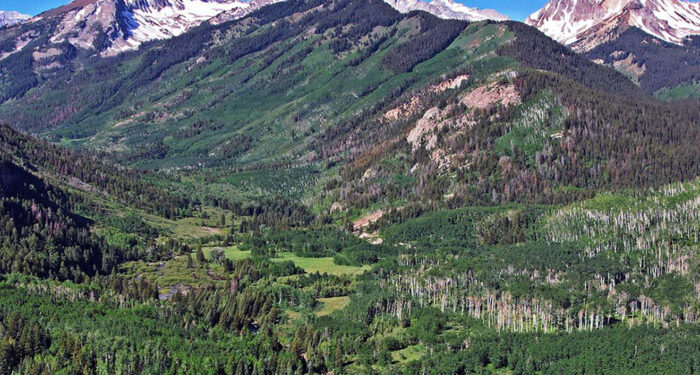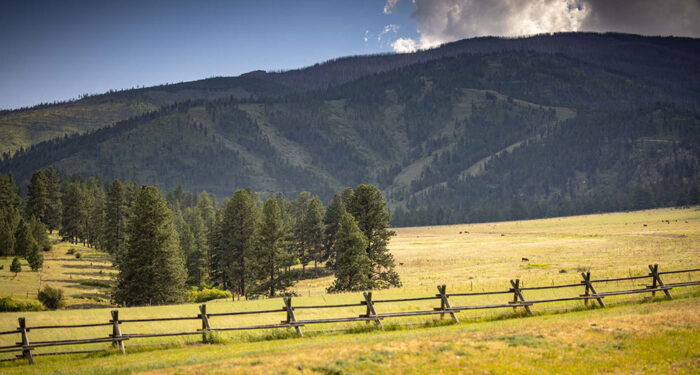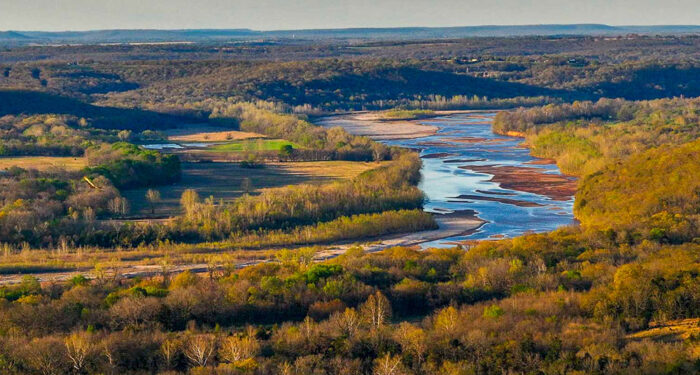In 1932, market hunting and other influences diminished the Trumpeter Swan population to fewer than 70 left in the world. They existed at a location near Yellowstone in a remote hanging valley harboring one of the most naturally diverse areas boasting the largest wetland complex within the Greater Yellowstone Ecosystem. In 1935 this area was federally dedicated as a National Wildlife Refuge. Thanks to conservation efforts and the relocation of nesting birds, today’s estimates show about 16,000 Trumpeter Swans reside in North America, including some 13,000 in Alaska, which winter on the Pacific Coast; more than 1,600 in Canada; about 500 in the Midwest; and more than 500 in the tri-state area of Idaho, Wyoming, and Montana. They are an incredible success story.
Trumpeter Swans are the largest waterfowl and heaviest flying bird in North America. They can be up to five feet in length from beak to tail and have a wingspan of up to almost seven feet with large males weighing over 26 pounds. Unlike their cousins, the Tundra, the Whistling, and the Mute, the Trumpeter Swans do not migrate and generally reside within the region in which they were hatched. They simply find winter refuge in the frigid waters throughout the northern Rockies, feeling quite comfortable dabbling around through the slush and broken ice in areas that hang on to open water.
Stretching their wings and extending their powder-white bodies skyward, the massive Trumpeter Swan appears angel-like, emerging from the icy waters where they take refuge from the winters.
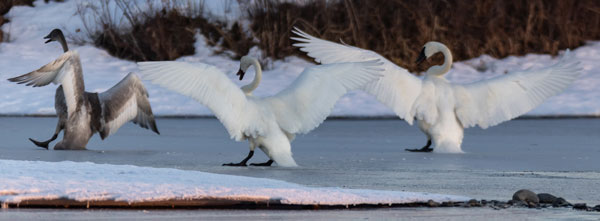

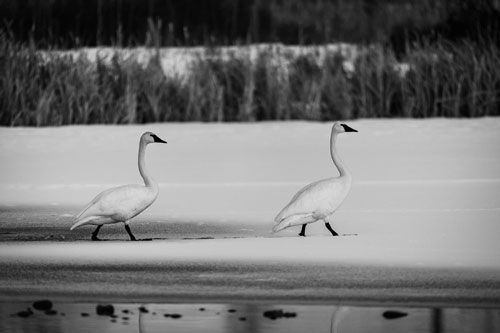
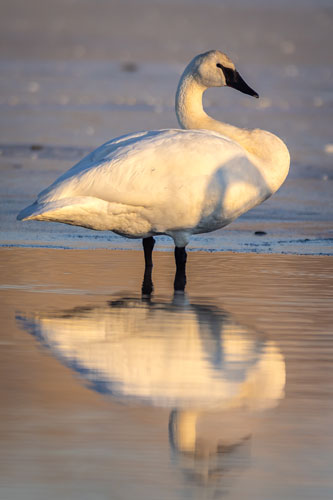


Photos by Tim Murphy, Partner at Hall and Hall


